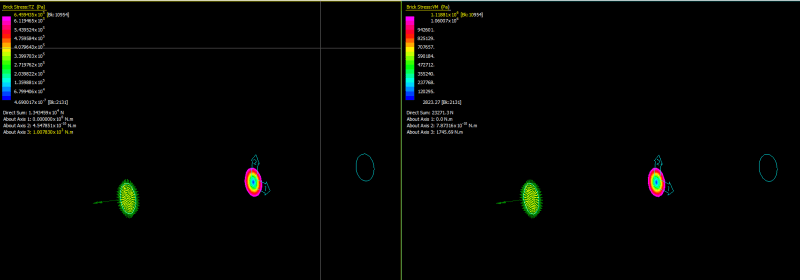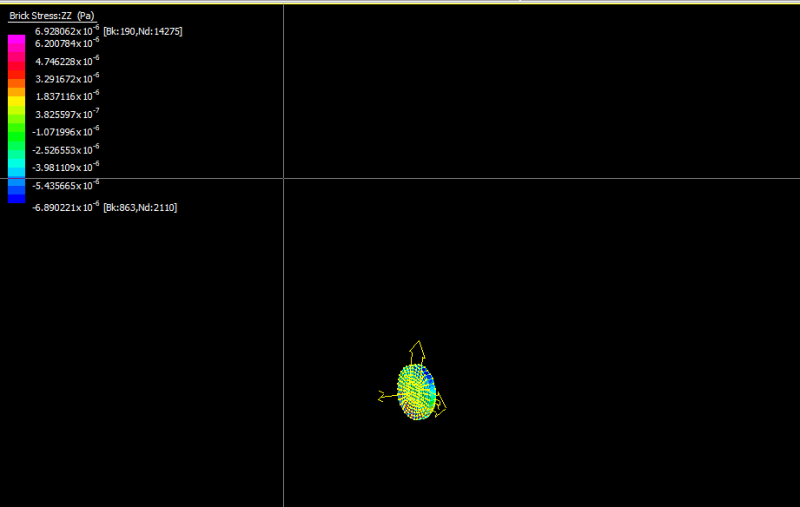ajm4zc
Industrial
- Oct 3, 2018
- 2
How do normal stresses arise in a "pure" torsion problem?
Example problem is 12" long solid shaft of 1" OD. One end is fixed, the other has a moment on the face of 500 lbin. Part was discretized in 3D using 2nd order trias. The resulting shear stresses match up fine with the simple hand calculations, but I am perplexed that there is a von-mises stress, and that it is about twice the max shear stress. How are normal stresses created in this shaft if they are not specified by the initial boundary conditions? Do is it have something to do with the elements used for meshing? How can I solve for these normal stresses by hand for this case?
Thank you.
Example problem is 12" long solid shaft of 1" OD. One end is fixed, the other has a moment on the face of 500 lbin. Part was discretized in 3D using 2nd order trias. The resulting shear stresses match up fine with the simple hand calculations, but I am perplexed that there is a von-mises stress, and that it is about twice the max shear stress. How are normal stresses created in this shaft if they are not specified by the initial boundary conditions? Do is it have something to do with the elements used for meshing? How can I solve for these normal stresses by hand for this case?
Thank you.


